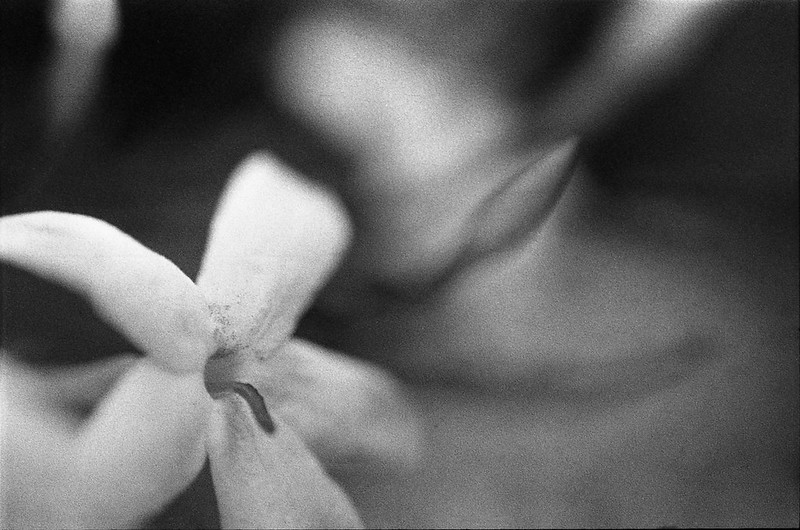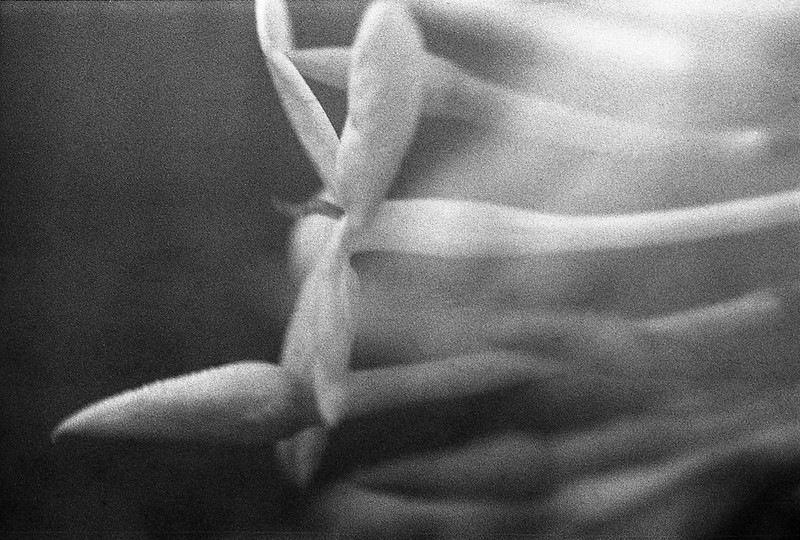Lots of people take macro photos these days. Hop on over to photo.net and you'll see what I'm talking about. Most of the examples on that site are amazingly sharp and bright and colorful. That is because they are taken with digital SLRs equipped with a 'macro' lens of some sort and then the photo is cropped down even closer. This can be done because of the high pixel count of the newest sensors as well as the sharpening algorithms used by modern editing software. Now I don't have a macro lens, so I have to make due if I want to get close. Most of my lenses have a minimum focusing distance of about 2ft, so I have to do something different to get up close to my subject. This is a technique that I learned a long time ago, so it must have been out of Popular Photography or Photographic magazine. Yes, I was taking photos well before the advent of the world wide web. What I do is to take my normal prime lens off of my SLR. In this case it is a Nikkor 50mm 1:1.4 lens on my Nikkormat FTn. Then I flip the lens around so that the mount is facing outward and I hold the outer part up to the camera, pressed against the front. Got it? I'm just holding the lens backward against the front of the camera. There are 'adapters' that will convert your lens mount to a male screw mount so that you can use the filter threads to actually hold the lens in place, but I have never really found I need something so elaborate. Make sure the lens is stopped down a bit and focused at the minimum distance. Then you are going to have to move closer and farther from the subject until the focus is just right. The more you stop down, the more will be in focus (normal depth of field principles apply), but things are going to get really really dim in the finder window, so f/8 is probably about as small as you want to get with the aperture. I think I was more like f/2 for these photos. That makes for some shallow DOF, but I like the effect.
The film was some Ilford FP4 that had been rebranded as generic "Professional Film". It had expired back in 1981, so I shot it at iso 25. Development was in my old stand-by Adonal (Rodinal) diluted 1:100, developed for 70min with 10sec agitation initially and at 35min. What you see is pretty much how it came out of the Epson V600 scanner. I did a little dusting in PhotoShop. So what are you waiting for? Get that normal lens off of your SLR and take some great macro shots of your own!


No comments:
Post a Comment